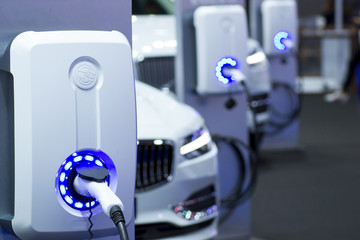LOM? 3 letters that are shaking up the daily life of fleet managers by exposing them to new constraints that will have a profound and lasting impact on the automotive landscape of corporate fleets.
LOM? 3 letters that are shaking up the daily life of fleet managers by exposing them to new constraints that will have a profound and lasting impact on the automotive landscape of corporate fleets.

Focus on the “greening” of fleets
In 1er At 1er January 2022, the LOM will require fleets of more than 100 vehicles to include, at a minimum, 10% of vehicles with low CO2 emissions (<60g of CO2 / km). In other words, 10% of vehicles must be either 100% electric vehicles, or plug-in hybrid vehicles, or hydrogen vehicles, knowing that conventional non-rechargeable hybridization is de facto excluded from the possibilities (given the higher pollutant emissions at the above mentioned rate).
While this effort is beneficial for the planet, does it nonetheless correspond to the needs and practices of businesses? Do fleet managers have the tools to assess the relevance of the energetic migration of each vehicle? Is the offer of automobile manufacturers in terms of low emission vehicles adapted to these needs? If so, how do you make the right vehicle choices? What charging solutions can be offered to electric vehicle drivers taking into account their mobility needs? How to promote the systematic recharging of hybrid vehicles to avoid the sharp rise in TCO? ...
Can all these questions seem distant, abstract? yet the hour of choices has already come. Because there is another essential component of this new legislative framework: the “ZFE-m”. Here too, these 4 little letters are about to turn the life of the fleet manager upside down and that of the company in general. ZFE-m constitute low-emission zones where the most polluting vehicles will be limited or even banned altogether. And this obligation concerns around ten geographic areas * where a large number of companies are concentrated.
Adopt the right tools to make the right choices

The energy migration of a particular vehicle cannot be done by chance. Assigning an electric vehicle to a salesperson or an itinerant technician traveling more than 500 km / day would be heresy. Allocating a plug-in hybrid vehicle to someone who only drives on the motorway would not make more sense.
The rigorous analysis of uses, over a significant period, therefore appears to be an essential step to avoid risky, even counterproductive, choices.
To help companies in this crucial stage of the analysis, Optimum Automotive provides fleet managers with a decision support tool based on the analysis of the movements of each vehicle over a period of 3 months. The analysis is then carried out by means of the feedback provided by the on-board telematics unit. This in-depth study of individual uses makes it possible to highlight the compatibility of uses (driving, downtime) with the relevance of potential energy migration. Beyond the "energy use / compatibility" matching, the tool makes it possible to estimate the potential gains both financially and environmentally.
Four analyzes are carried out by Optimum Automotive in order to guide skeptical companies and to transform the test of more mature companies. By showing the savings in terms of fuel consumption, CO2 emissions and TCO, tables allow the savings to be clearly measured. These analyzes allow a personalized recommendation to develop their vehicle fleet more quickly.
Two types of reports will be made available to the fleet manager following these analyzes:
- The Electric Fleet Report which allows to recommend the number of vehicles to be converted according to the use which is usually made of them, allows to recommend the number of vehicles to be converted according to the use which is usually made of them,
- The Electric Vehicle Alternative which allows the recommendation towards the best adapted models on the market.
In conclusion :

If the LOM seems problematic at first glance for companies, let us not forget the vocation of this law on the scale of the country:
- Invest more and better in everyday transport
- Facilitate and encourage the deployment of new solutions to allow everyone to travel
- Start the transition to cleaner mobility.
Attractive on paper for the preservation of our environment, the LOM nevertheless constitutes a real headache for the fleet manager. To enable it to make a relevant energy transition, it must equip itself with analysis tools (based on the study of real uses) and decision-making support to make the right choices at the right times.
* Lyon Metropolis, Grenoble Alpes Metropolis, City of Paris, Greater Paris Metropolis, Aix-Marseille-Provence Metropolis, Nice-Côte-D? Azur Metropolis, Toulon-Provence Mediterranean Metropolis, Toulouse Metropolis; Montpellier-Méditerranée Métropole, Eurométrople de Strasbourg, Métropole Rouen-Normandie.


